Submersion Guitar Pedal Prototypes
Overview – Back in July of 2020, I was beginning to put together what would eventually become the Winter Storm guitar pedal. At the same time, I was expanding my knowledge of guitar pedal circuits and beginning to build pedals regularly, some of which were clones of common guitar effects. I’ve always been interested in octave fuzz and I found a schematic which was very simple and straightforward, and something that I knew I could build given my limited experience. What I ended up making was a slightly modified clone of the Tim Escobedo Octup Blender. This was the 9th guitar pedal I had ever made and it was one of my first with a color scheme. I enjoy monochromatic colors and I’m especially fond of the color blue, so I decided to have a blue enclosure with blue knobs for this particular build.
Octave Fuzz – July 2020
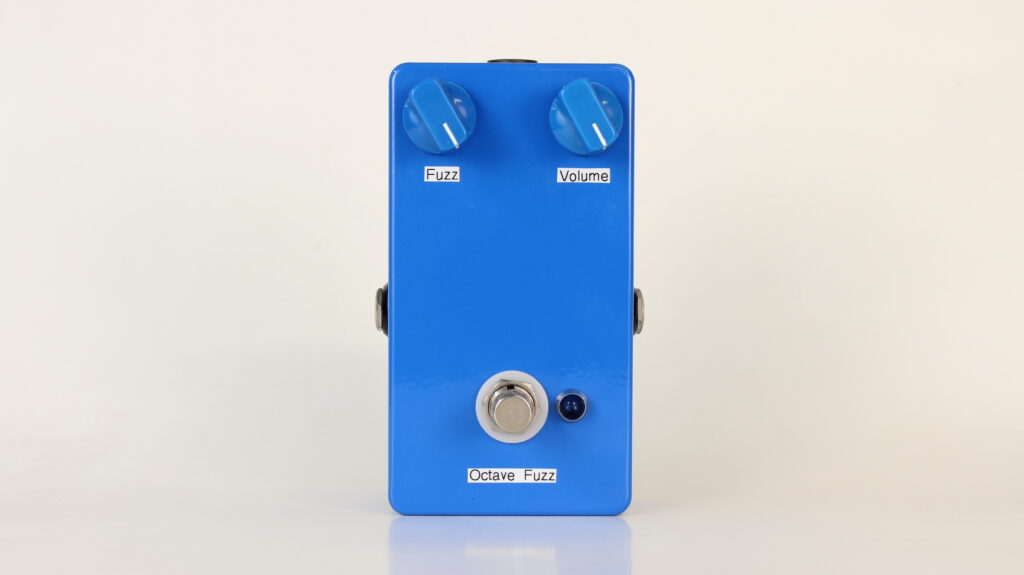
The circuit was interesting but it had several issues. I felt that the sound of this pedal was woofy, harsh and spitty, and not ideal in general. In addition, the octave notes were pretty subdued and not as present as I would’ve liked, the notes would compress heavily with increased pick attack, and there was signal bleed from the octave portion when the pedal was engaged and the control was set at zero.
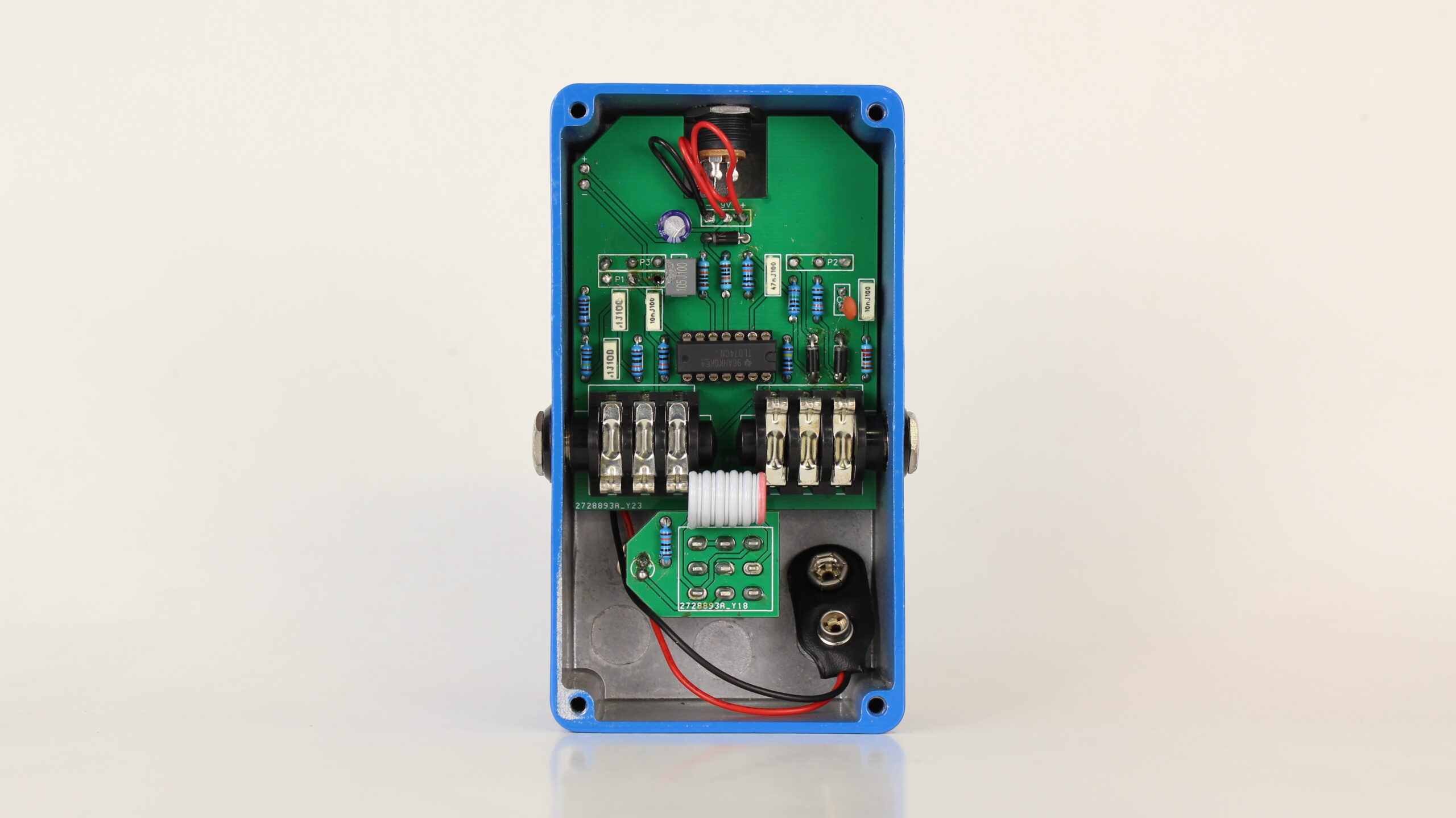
I’ve always enjoyed the octave fuzz sound but I could never find one that really suited me. Many popular examples were created in the 1960’s and had low input impedance, meaning they don’t always play nicely with modern pedalboard setups. I’ve also felt that the amount of gain in a typical octave fuzz pedal is either full blast or slightly less than full blast, regardless of where you set the controls. There are also odd EQ choices where there is either too much bass, very thin treble, or a lack of midrange frequencies which in addition to the overwhelming amounts of gain means that the sound gets buried in a band mix. Overall though, I was glad that I built this pedal and it was a good foundation for what was to come.
Op Amp Fuzz – May 2021
Nearly ten months after my first octave fuzz build, I decided to create a design more or less from scratch. I didn’t have a name for it and so I simply called it “Op Amp Fuzz” despite not having much relation to the Electro-Harmonix pedal of the same name. This was a very ambitious design for me at the time and it ultimately proved to be too ambitious. I wanted to create something which had a volume control, a blendable octave fuzz, a blendable Big Muff style fuzz, and a boost/cut control where either midrange frequencies or a high shelf could be selected with a toggle switch.
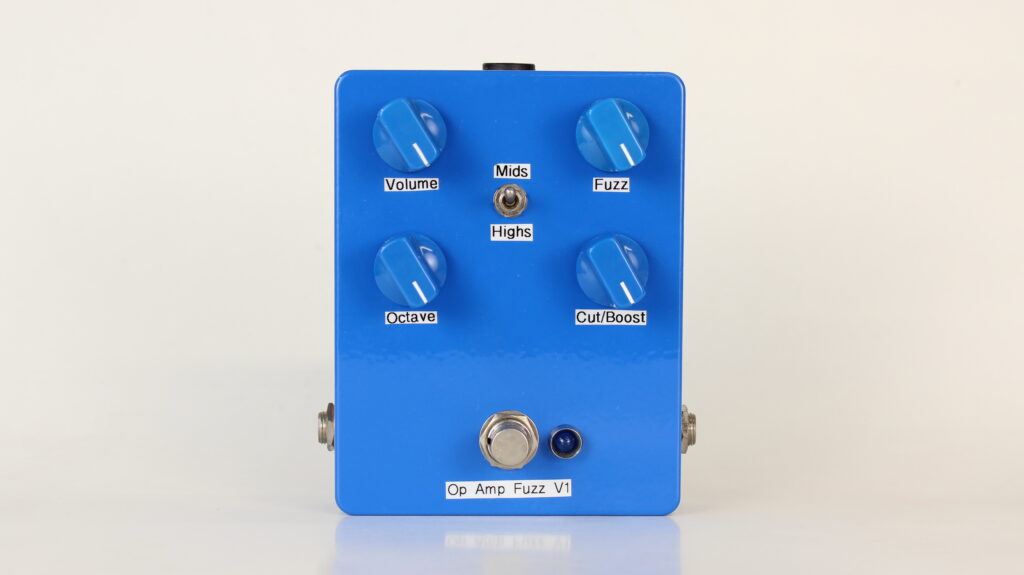
This pedal worked but not without flaws. In fact, it had quite a few issues which prevented it from working as I initially intended. The octave fuzz was harsh on its own and especially when combined with the Muff style fuzz, it had numerous issues with biasing and filtering of the signal path, the footswitch popped loudly when engaged and the circuit itself was enormous.
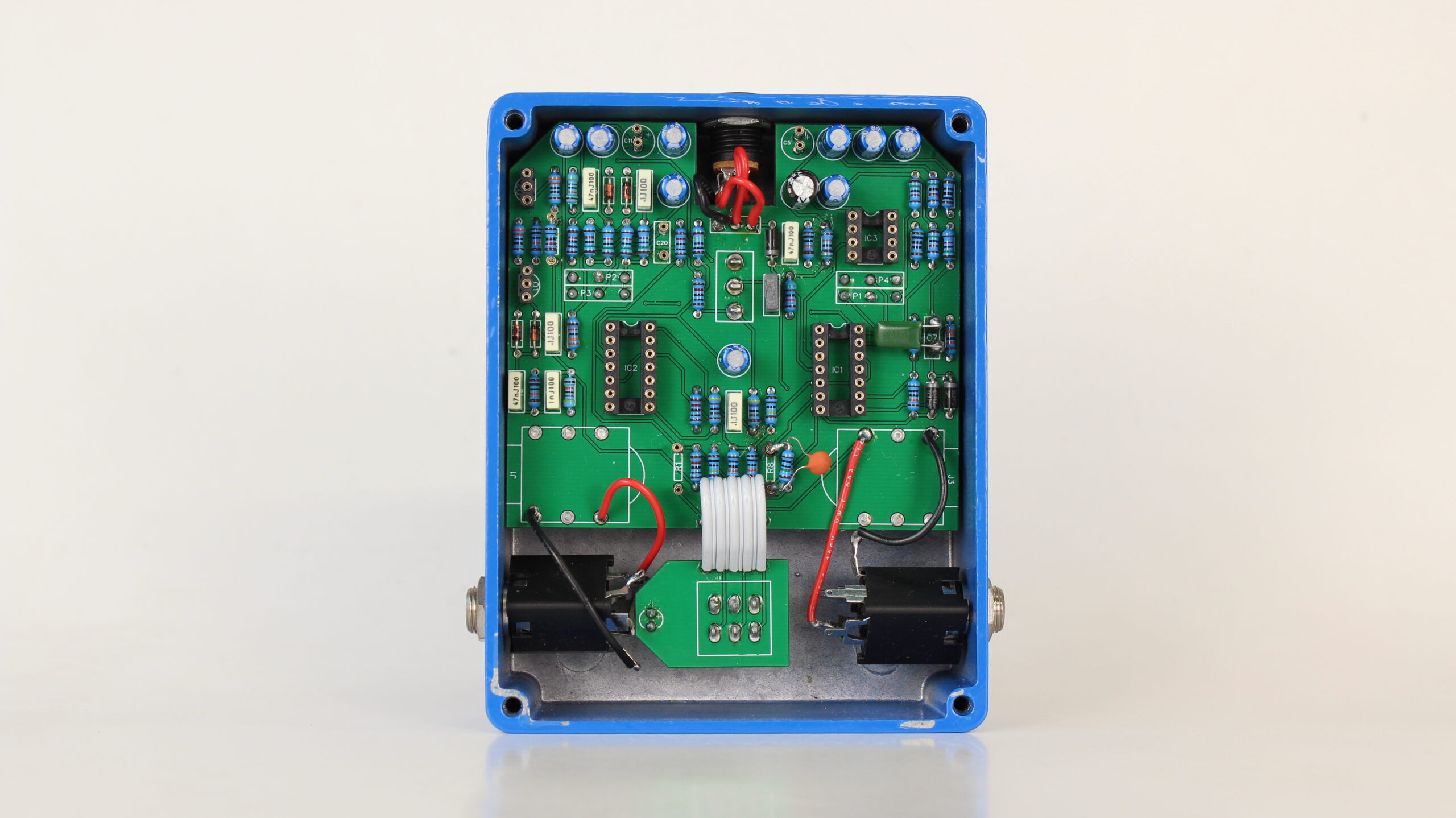
While this pedal had issues, there was reason for optimism and it was something that I felt I could troubleshoot.
“Aquarium” Op Amp Fuzz V2 – July 2021
A couple of months later I began working on “Op Amp Fuzz V2”, or what I had nicknamed “Aquarium”, based on the blue color scheme and water themed controls. I thought that I had corrected some of the issues from the previous version and decided to build another prototype. As it turns out, this version had its own set of issues in addition to some reoccurring problems from the previous version. There was once again a loud popping from the foot switch which seemed to indicate an issue with DC voltage on the output, but it was not something I could isolate or correct fully. There was also a strange interaction between the controls. When I would strum particularly hard I would get a weird, buzzing distortion. Also, when I would back the volume control from 100% to around 90%. I would hear a clicking sound. In addition to these functional issues, I felt the pedal was too dark and muddy sounding, especially at louder volumes.
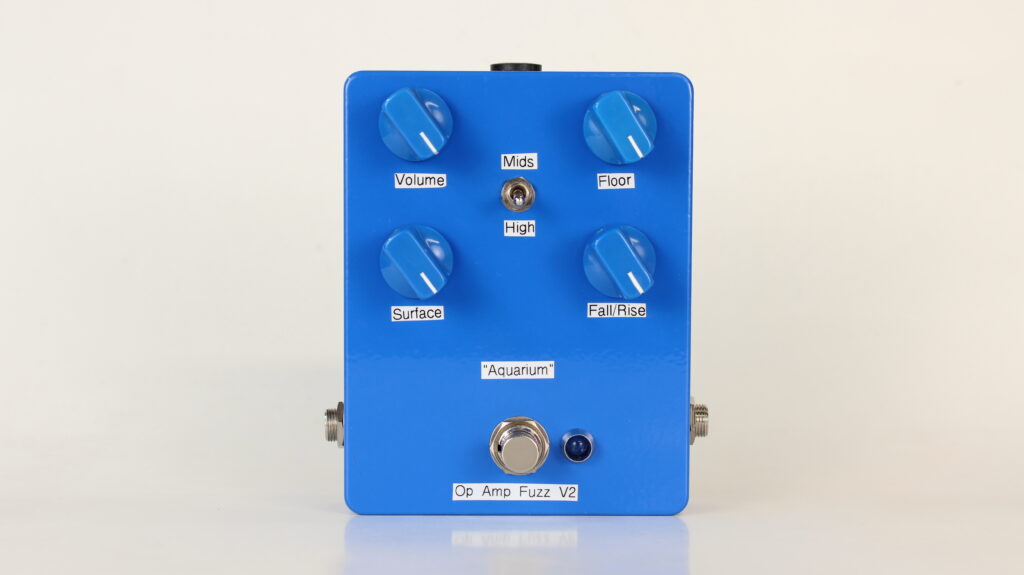
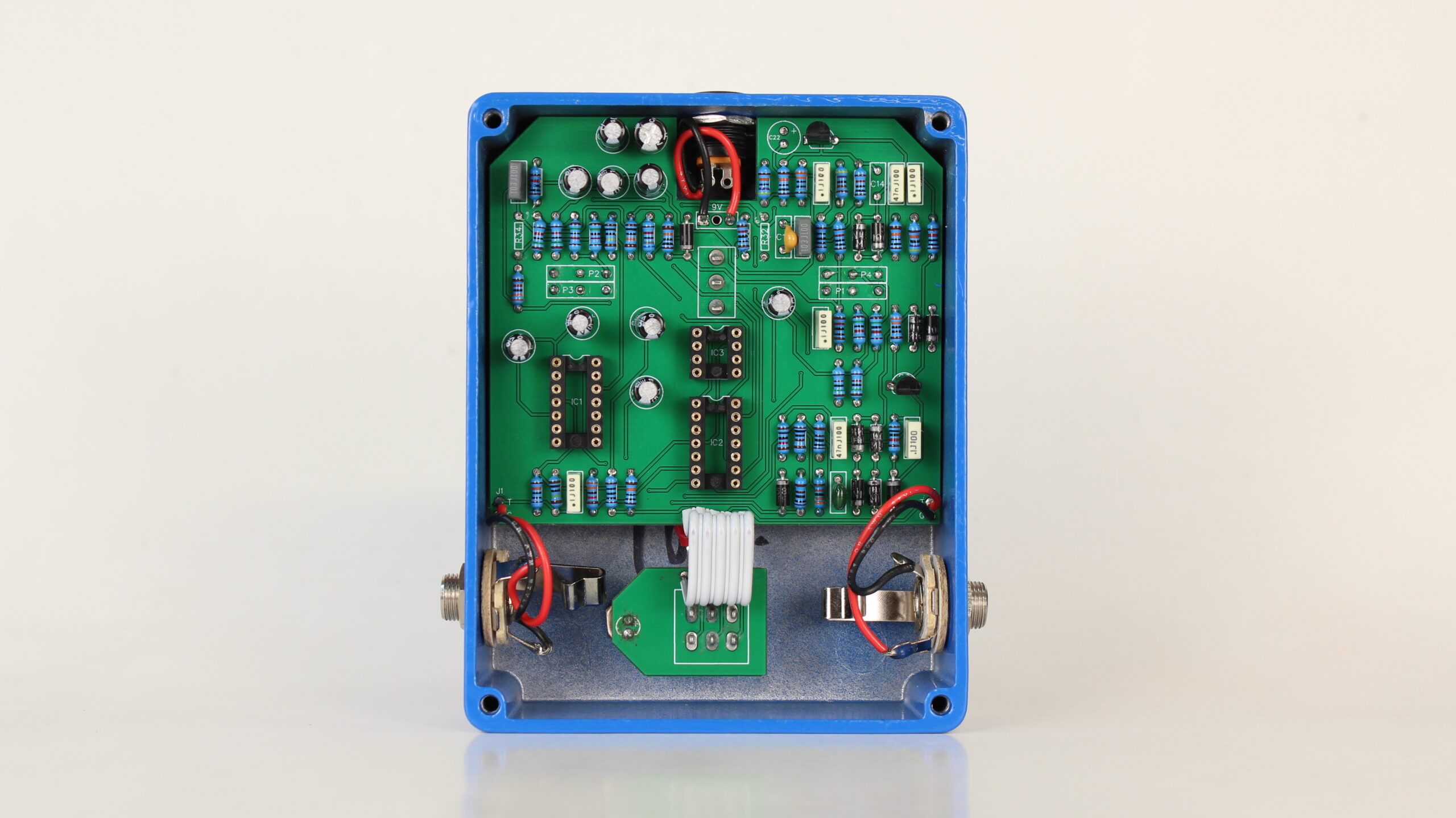
I wasn’t overly happy with how this one turned out, and so it was back to the breadboard and another attempt at trying to get this pedal to behave.
Op Amp Fuzz V3 – November 2021
Over the next 4 months I continued working on this circuit and eventually came up with a new version. During this time I realized that the name Aquarium had already been taken, which was not surprising, and I decided to come up with a new name. What I ended up calling it was the Submersion guitar pedal, the idea being that when you played it you would be submerged in sound.
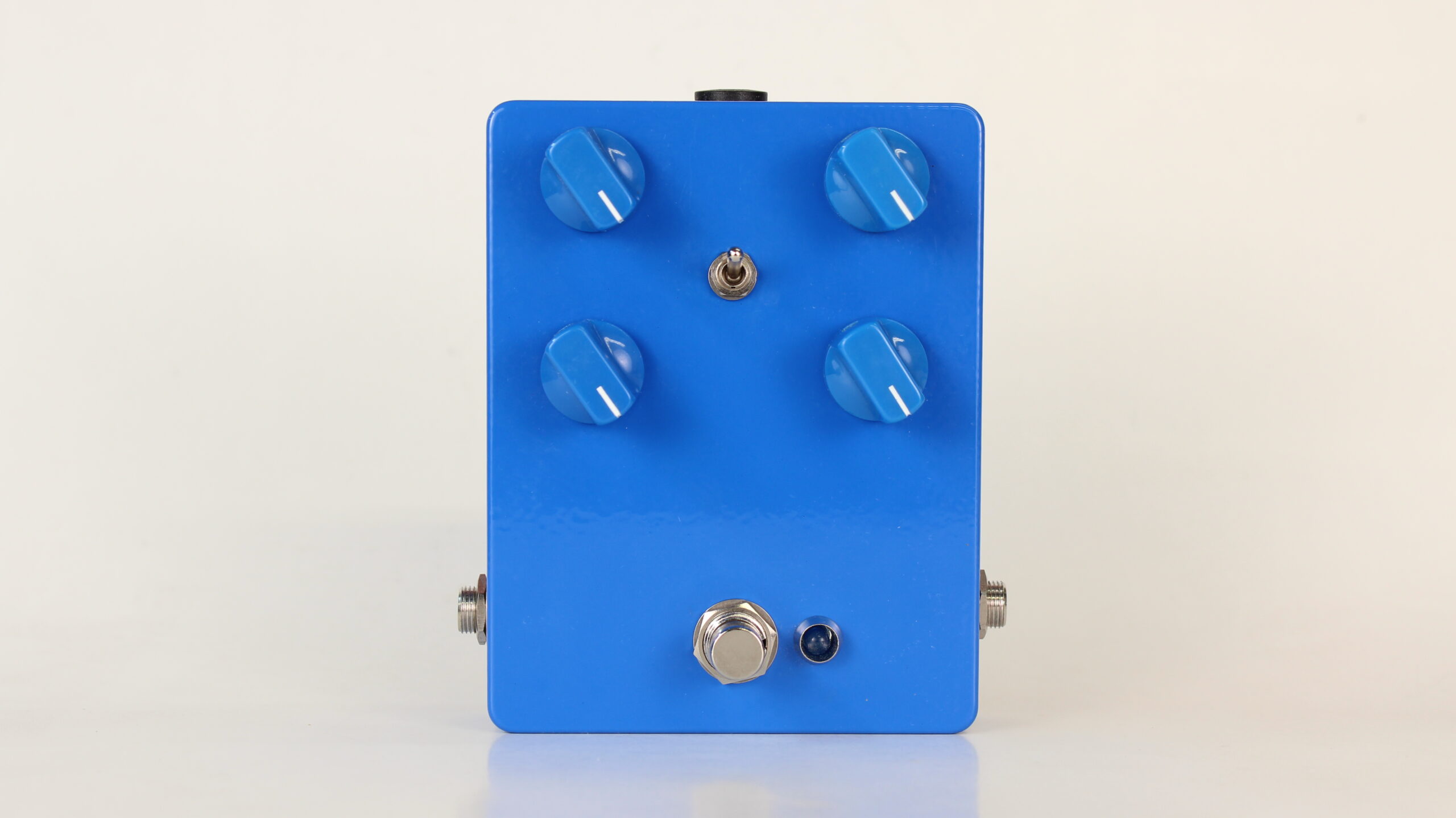
What I had decided to do since the previous version was to rework the octave fuzz portion of the circuit, and I went with a design that was based on the Univox Super Fuzz circuit. I was really hoping that I had finally ironed out the issues that I had with previous versions, but unfortunately this was not the case. I found that the octave fuzz portion of the circuit did not have a very desirable sound, and it was also somewhat unstable. In addition, I continued to get strange popping sounds when engaging switches, signal bleed, and portions of the circuit would not cooperate with others.
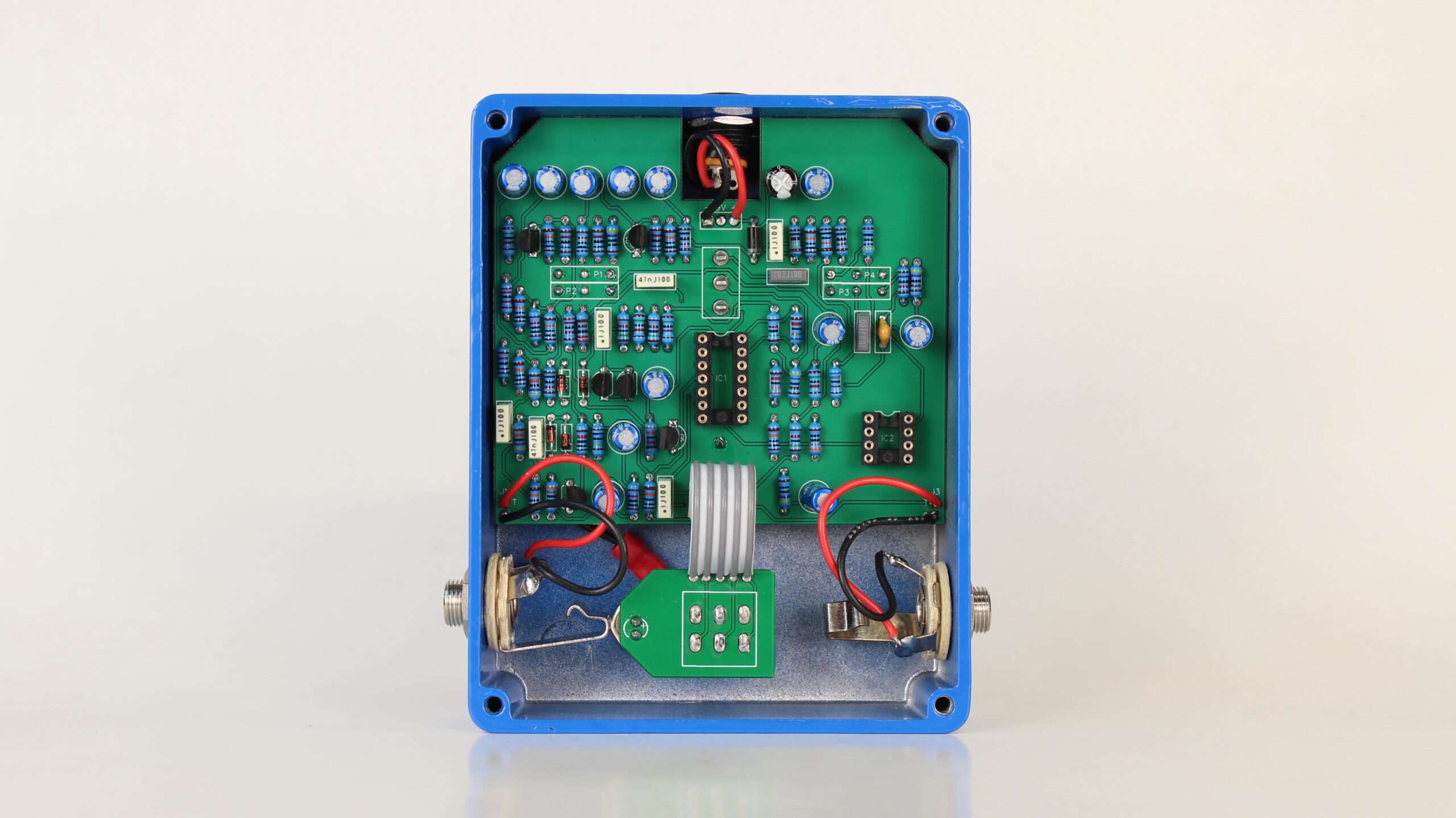
I had reached a dead end with this particular pedal and I didn’t even bother to label the controls since I was so disheartened by it. I decided to shelf this project.
Submersion Prototype – June 2023
On at least a dozen separate occasions from November of 2021 through April of 2023, I tried to get my originally intended design to work the way I had envisioned. Every time I thought that I was making progress, there would be issues that would set me back. Ultimately, the circuit just did not work because it was too complicated. I had really struggled with this design until I finally decided to scrap everything but the octave fuzz portion of the circuit. The one silver lining during this time was that I had developed what I felt was a really excellent sounding octave fuzz, and it was the only part of the circuit that didn’t have problems. In early May of 2023, I was able to perfect the octave fuzz portion of the circuit and I decided to make a simple two knob prototype with a volume control, and a blendable octave fuzz control. This way, I would have something that I was confident in, and I wouldn’t have to rebuild it on my breadboard every time I wanted to play with it.
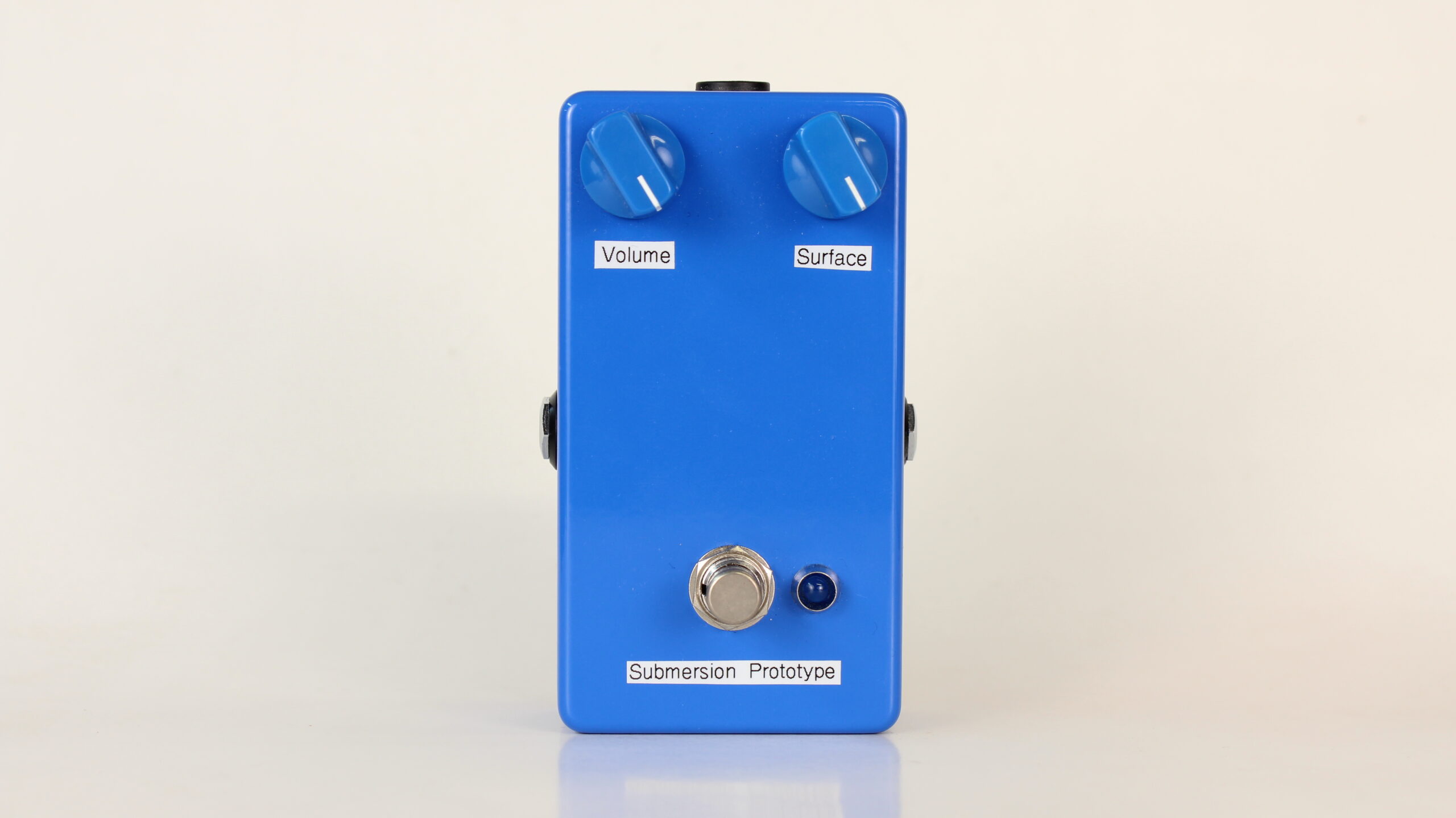
I ordered parts and created a prototype and this time it worked perfectly as I expected. When I finished the prototype, my intention was to see how it interacted with other guitar pedals and add to the circuit if I felt that it would enhance the design. Over the next few months I had this final version of the Submersion guitar pedal prototypes as a mainstay on my pedalboard and I really enjoyed using it, so much so that I began to realize that it solved all of the issues that I had with every other octave fuzz pedal I’ve tried. The Submersion doesn’t have input impedance problems, it works well with modern pedalboard setups and it can be placed in any part of the signal chain including the effects loop of an amplifier. The octave fuzz is usable at every interval and the player can decide how much or how little to add to their already established sound. There isn’t too much bass, the treble is smooth and even, the mid-range frequencies are intact, and it doesn’t get buried in a mix.
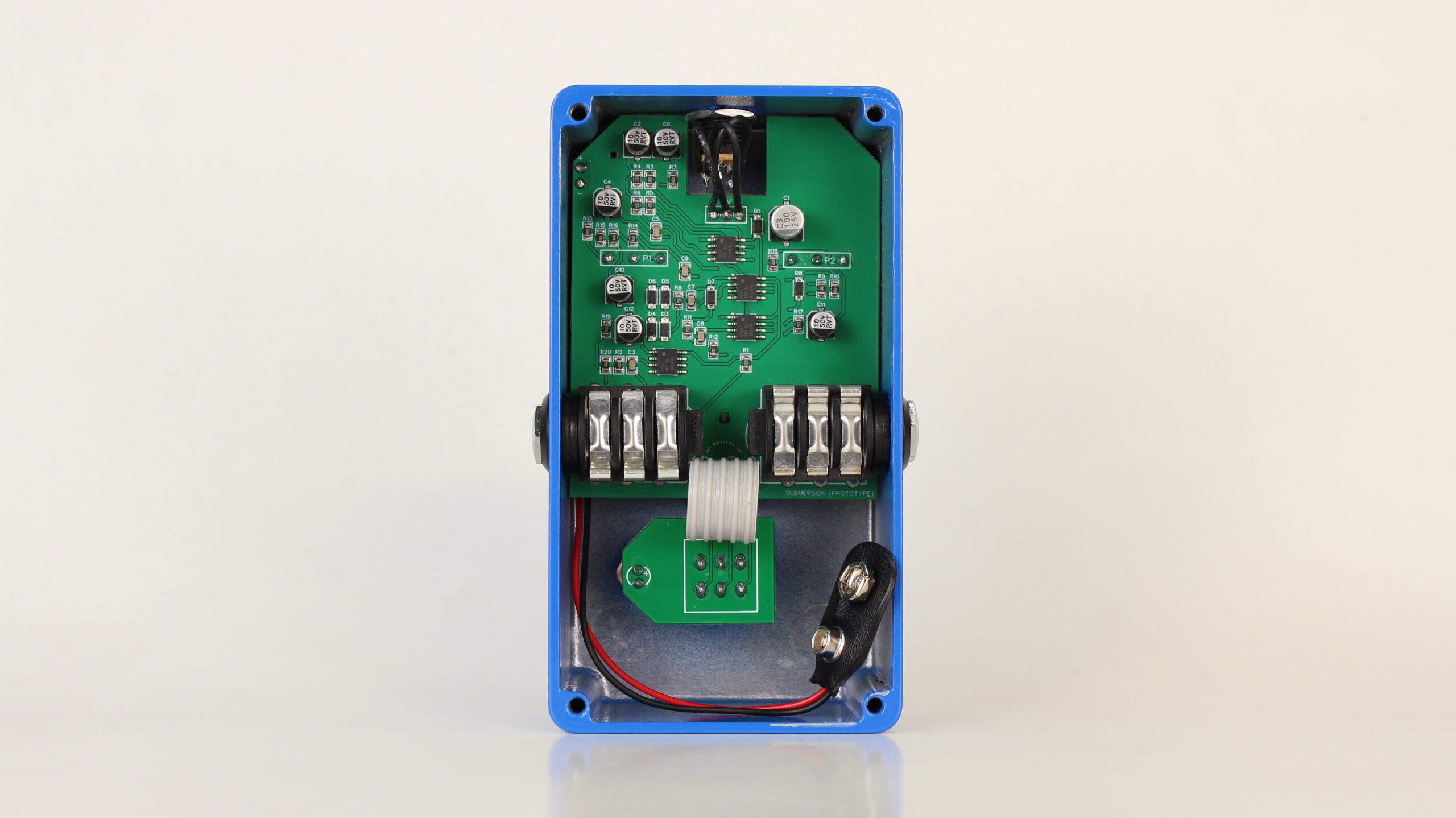
It was a long journey taking over three years but I’m happy to announce that the Submersion will be my third guitar pedal release and I’m very excited to show you more!
November 2023 – Here’s the sketch of the Submersion guitar pedal graphic done by Andre Kurnia which was the basis for the final design:

